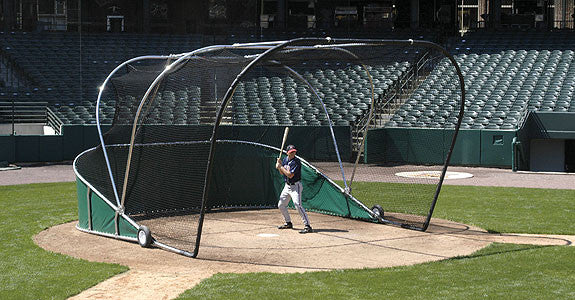Stepping Off the Pitching Rubber October 31 2020, 0 Comments
In watching the recent World Series we saw the Tampa Bay player try to steal home and the picture from the Los Angeles Dodgers create the out at home plate. But there were several things there that cause this to be a great play but mostly unnoticed by both the announcers and the people watching. But the players themselves understood the rules and reacted exactly as . They should have, the first and most key point was that the pitcher from the Dodgers was at his set position when the runner broke and then instead of panicking he stepped off the rubber backwards. Why he do that???? - for a very simple reason that turned them into an infielder instead of a picture and now the rules of interference by the batter would start to take effect if there had been any. If he had stayed on the rubber and had thrown a pitch that would've been and legal pitch in the batter would've had the right to hit it over the catcher might've interfered by coming forward. By stepping backwards your first responsibility from being a pitcher to becoming infielder.
Many coaches ask players to step off the rubber before they pick to first. In my opinion they do that because it's nice and safe and nobody can balk but in truth it gives the runner and added fraction of a second to get back, and because he steps off the rubber one very important rules takes effect. If there's a wild throw and it goes out of play two rulings could be made:
1. if he still on the rubber that he's a pitcher and only one base is awarded. When a pitcher from the rubber throws a wild pitch or pick off it goes in dead ball area the runners only awarded one base at the time of the throw from the base he possessed.
2. If the pitcher steps backwards off the rubber he now becomes infielder and the rules of a ball going into debt ball area take effect and that is to bases from the base they possessed at the time of the throw.
Using this very common example: runner on first base pitcher come set on the rubber and picks to first and gets away and goes into the dugout or dead ball area. the runner is awarded second base one base from the one he possessed ( first).
Second case almost the same but not quite: runner on first base pitcher come set on the rubber and steps backwards andpicks to first and gets away and goes into the dugout or dead ball area. the runner is awarded 3rd base 2 bases from the one he possessed ( first).
so you can see may be added alleviates the opportunity or chance to balk by the pitcher but it does increase the risk of runners getting more bases with the wild throw.
Something think about as you coach your pictures and their pickoffs
umpire for 50 years and still learning. Arnald Swift










